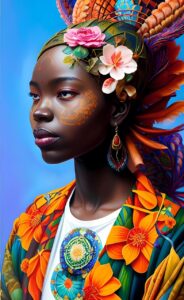 Singapore’s Unseen Threads: Exploring Indigenous Narratives in a Global Hub
Singapore’s Unseen Threads: Exploring Indigenous Narratives in a Global Hub
Introduction:
In the heart of Southeast Asia, where modernity meets tradition and cultures converge, Singapore stands as a global city-state with a rich history. While the narrative of Singapore often revolves around its economic success and cosmopolitan character, there exists an aspect that often remains unseen—the presence of indigenous communities. In this exploration, we delve into the lesser-known indigenous narratives of Singapore, shedding light on their unique perspectives, challenges, and contributions to the dynamic tapestry of the Lion City.
The Orang Seletar: Guardians of the Waterways
Nestled along the coastal areas of Singapore, the Orang Seletar, also known as the Seletar or Straits Native, are considered one of the indigenous groups of the region. Historically, they were seafaring communities with a deep connection to the waterways and mangrove ecosystems that once characterized the coastal landscape of Singapore.
The Orang Seletar’s traditional way of life revolved around fishing, boat-making, and gathering resources from the rich biodiversity of the mangroves. Their cultural practices and beliefs are deeply intertwined with the natural environment, reflecting a profound understanding of the delicate balance between human activities and the ecosystems they inhabit.
Over the years, the Orang Seletar have faced challenges such as the loss of their traditional lands due to urbanization and industrial development. Despite these challenges, efforts have been made to preserve their cultural heritage, including initiatives to document traditional knowledge, revive language, and maintain a connection to their ancestral roots.
Indigenous Perspectives in Urban Spaces:
Singapore’s rapid urbanization and development have transformed its landscape, with skyscrapers, shopping malls, and high-tech infrastructure dominating the skyline. In the midst of this modernity, indigenous perspectives offer a unique lens through which to view the city-state’s complex identity.
Urban Spaces as Continuations of Tradition:
For the Orang Seletar and other indigenous communities, urban spaces are not necessarily a departure from tradition but a continuation in a new context. Despite the changes in their physical environment, elements of their traditional knowledge and practices persist, adapting to the urban landscape.
Cultural Adaptation in the City:
The Orang Seletar have navigated the challenges of urbanization by adapting their traditional practices to fit the urban context. Fishing practices, for example, may have evolved from open sea fishing to river and coastal fishing, showcasing a resilience and adaptability that is integral to their identity.
Preservation of Cultural Heritage:
Efforts to preserve cultural heritage are critical in urban settings. Initiatives that celebrate traditional crafts, storytelling, and communal practices contribute to the retention of cultural identity. Museums and cultural centers can play a vital role in showcasing the narratives of indigenous communities to both locals and visitors.
Intergenerational Transmission:
Transmitting traditional knowledge across generations is a challenge in urban spaces where the pace of life is often fast and demands are high. Creating spaces for intergenerational learning, whether through community programs, schools, or digital platforms, becomes essential for the continuity of indigenous narratives.
Urban Planning with Cultural Sensitivity:
Urban planning that takes into account the cultural significance of specific sites and landscapes is crucial. Preserving spaces with historical and cultural value to indigenous communities, even within the urban sprawl, demonstrates a commitment to cultural sensitivity and inclusivity.
Challenges Faced by Indigenous Communities in Singapore:
While Singapore has seen tremendous economic growth and development, the challenges faced by its indigenous communities highlight the delicate balance between progress and cultural preservation.
Land Dispossession:
Urban development often comes at the cost of traditional lands. The Orang Seletar, like many indigenous communities worldwide, have faced land dispossession due to the expansion of urban areas. This not only impacts their livelihoods but also severs their ties to ancestral lands and cultural practices.
Cultural Erosion:
The rapid pace of urban life can contribute to the erosion of traditional cultures. The Orang Seletar’s cultural practices, language, and oral traditions face the risk of fading away as younger generations adapt to the dominant cultural narrative of the city.
Economic Disparities:
Indigenous communities may experience economic disparities, limiting their access to education, healthcare, and economic opportunities. Addressing these disparities requires targeted policies that consider the unique challenges faced by indigenous groups.
Recognition and Representation:
Indigenous communities often seek recognition and representation in the broader societal narrative. Ensuring that their perspectives are included in public discourse, educational curricula, and cultural institutions contributes to a more inclusive understanding of Singapore’s diverse heritage.
Environmental Concerns:
For communities like the Orang Seletar, who historically depended on the natural environment, environmental degradation poses a significant concern. Preserving mangrove ecosystems and addressing environmental challenges are intertwined with the cultural identity and well-being of indigenous communities.
Preserving Indigenous Narratives in Singapore:
Preserving the narratives of Singapore’s indigenous communities requires a concerted effort that combines cultural sensitivity, community engagement, and policy considerations.
Cultural Documentation and Archives:
Initiatives to document and archive indigenous languages, oral traditions, and cultural practices provide invaluable resources for future generations. Establishing cultural centers or collaborating with existing institutions can serve as hubs for preserving and showcasing indigenous heritage.
Education and Awareness Programs:
Integrating indigenous perspectives into educational curricula fosters understanding and appreciation. Awareness programs in schools, museums, and public spaces can contribute to a more inclusive narrative that recognizes the contributions of indigenous communities.
Community Empowerment Initiatives:
Empowering indigenous communities through economic initiatives, vocational training, and sustainable livelihood programs addresses economic disparities. This includes supporting traditional crafts, eco-friendly practices, and community-led businesses.
Urban Planning with Cultural Consultants:
In the process of urban planning, involving cultural consultants from indigenous communities ensures that development projects are culturally sensitive. This involves identifying and preserving sites of cultural significance and incorporating indigenous design elements where appropriate.
Collaboration and Advocacy:
Collaborative efforts involving government agencies, non-governmental organizations, and indigenous leaders are essential. Advocacy for policies that recognize and respect indigenous rights, while addressing social and economic disparities, contributes to a more inclusive Singapore.